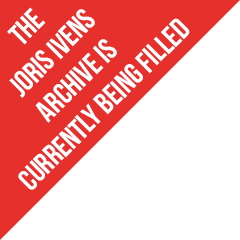

Matera in the Italian region of Basilicata is this year’s European Capital of Culture. The exhibition ‘Visione Unica’ of the design group Formafantasma includes Joris Ivens’ documentary l’ Italia Non è un Paese Povero (1960) as part of a visual archive about the very rich patrimony of this region. The last decades Matera shows a remarkable switch from poor and subordinated region towards a spectacular cultural pinnacle, praised by UNESCO, the World Monuments Fund and used by many famous film directors. The exhibition runs from 8 June till 15 September 2019.
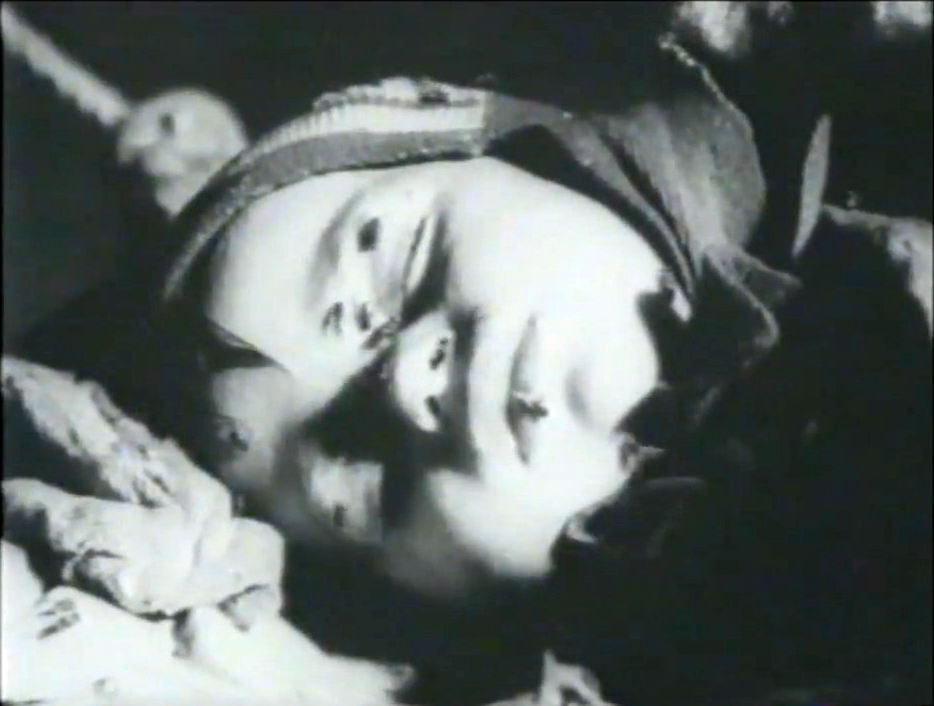
Joris Ivens, Filmstill from L'Italia non e un paese povero (1960): a baby sleeping in a cavern, surrounded by flies.
Censorship
Images of a baby with lots of flies on its face or images of households in caverns – the so called Sassi - with a pig, donkey or a cow walking inside, are still impressive and touching. How can a modern Italian government, with an industrialized society, neglect these poor people?, is the message of Ivens’documentary. This sequence was so confronting at the time, that RAI television decided to censor this part and cut it from the version broadcasted. They simply didn’t want to show poverty in a film focussing on industrial progress.
When Enrico Mattei, head of Italy’s National Fuel Trust ENI (Ente Nazionale Idrocarburi). commissioned Joris Ivens to make a film about the optimistic perspectives for Italy’s booming economy and society after the exploration of gas by ENI, he knew that Ivens was not in for state propaganda. Ivens made a series of three documentaries mixed with fiction, dream sequences, imagination, futuristic music, but also critical sequences. Like the one shot in Matera. Although Mattei left Ivens complete freedom and Ivens collaborated with Paolo and Vittorio Taviani, Tinto Brass and Alberto Moravia, the state television station RAI didn’t agree with especially the Matera-sequence. Until today RAI will not show this censored part.
In the meanwhile the reputation of Matera completely changed, thanks to these very Sassi caverns.
Paolo Taviani and Joris Ivens during the film shooting of the sequence 'Due alberi' of l'Italia non e un paese pover (1960). Copyright Joris Ivens Archives / European Foundation Joris Ivens.

Matera with sassi, caverns
Cultural world heritage
The caverns in the ancient town of Matera share a history of centuries. They are called the ‘Sassi di Matera’, meaning ‘stones of Matera’. The Sassi originate from a prehistoric settlement, and are suspected to be some of the first human settlements in Italy. The Sassi are houses dug into the calcareous rock itself, which is characteristic of the regions Basilicata and Apulia. In 1936/37 Carlo Levi wrote a famous book about this region of Lucania (which is known today as Basilicata), describing the extreme poverty. The peasants lacked basic goods because there were no shops in the village. Homes were sparsely furnished. Healthcare was atrocious. The religious values of the villages Levi visited were a mixture of Christianity and mysticism. In a way Ivens’ sequence in Matera echoes this book Christ Stopped at Eboli (Italian: Cristo si è fermato a Eboli). It also could have reminded Ivens of the situation in Borinage, in the poor situation unemployed miners and their families had to live.
In the 1950s, the government of Italy forcefully relocated most of the population of the Sassi to areas of the developing modern city. However, people continued to live in the Sassi, and according to the English Fodor's guide: ‘Matera is the only place in the world where people can boast to be still living in the same houses of their ancestors of 9,000 years ago.’ Until the late 1980s this was considered an area of poverty, since these houses were, and in most areas still are, mostly intolerable.
A cultural hot spot
Current local administration, however, has become more tourism-oriented, and has promoted the reconstruction of the Sassi with the aid of the European Union, the government, UNESCO, and Hollywood. Today there are many thriving businesses, pubs, and hotels. Some caverns were transformed into expensive houses for yuppies.
Because of the ancient and primitive scenery in and around the Sassi, it has been used by filmmakers as the setting for ancient Jerusalem. The following famous biblical period motion pictures were filmed in Matera: Pier Paolo Pasolini’s The Gospel According to St. Matthew (1964), Bruce Beresford’s King David (1985), Mel Gibson’s The Passion of the Christ (2004), Catherine Hardwicke’s The Nativity Story (2006), Other famous movies filmed in the city include: Alberto Lattuada's La Lupa (1953), Giuseppe Tornatore's The Star Maker (1995) and The Omen (2006).
A short film from 2012, called Hollow City, directed by Andrea de Sica, shows the remarkable switch from a deplorable area, kept secret because of shame, towards a spectacular cultural pinnacle, praised by UNESCO, the World Monuments Fund and famous directors. By interviewing citizens from Matera Andrea de Sica wants to explain in Hollow City how the situation today differs from the situation back in the 1950’s and 1960’s.
Andrea de Sica himself is the grandchild of famous Italian director Vittorio de Sica, after the war a leading figure of the neorealist movement (Ladri di biciclette, 1948). When Ivens met Vittorio De Sica in Italy during his cineclub tour they agreed to make a film together. This plan was never realized. Watching Hollow City: www.hollowcity.net
‘Visione Unica’-exhibition
Within I-DEA at Cava Paradiso, from June 8 to September 15, the exhibition entitled 'Visione Unica: Cultures of Environmental Manipulation' curated by Studio Formafantasma is presented. I-DEA, together with Open Design School, is one of the two main projects of Matera Capitale Europea della Cultura 2019, which is based on the artistic revisiting of the archive material and collections of the Basilicata region. In this way, the meaning of archive is totally reversed, from a place where to store sources and testimonies to a place where to take elements and transform them, making them lose their initial nature.
‘Visione Unica’-consists of an installation made up of 5 projections, 10 screens and a series of vernacular objects, which tell the story of the place where they were born and lived. Every single object and screen can be seen as a unique work or as a small part of the whole, the type of reading you want to give depends solely on the viewer. The more you look at the elements in the exhibition, the more you can see a common thread that unites them all, as if the central theme was the relationship between man and territory and how the latter changes because of or simply in relation to the first one.
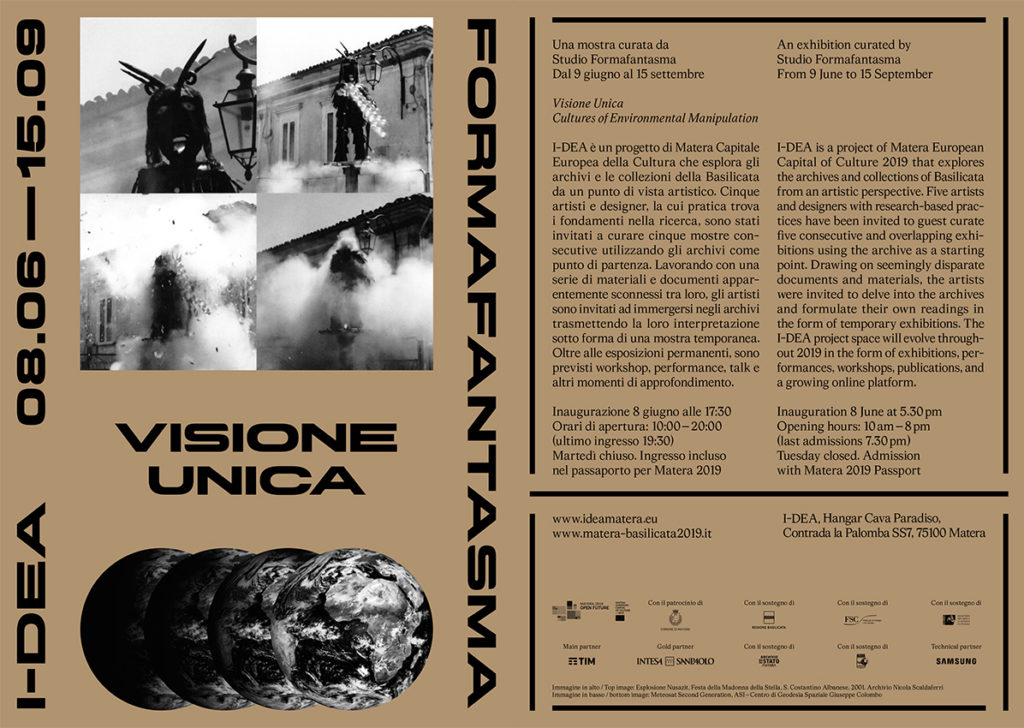
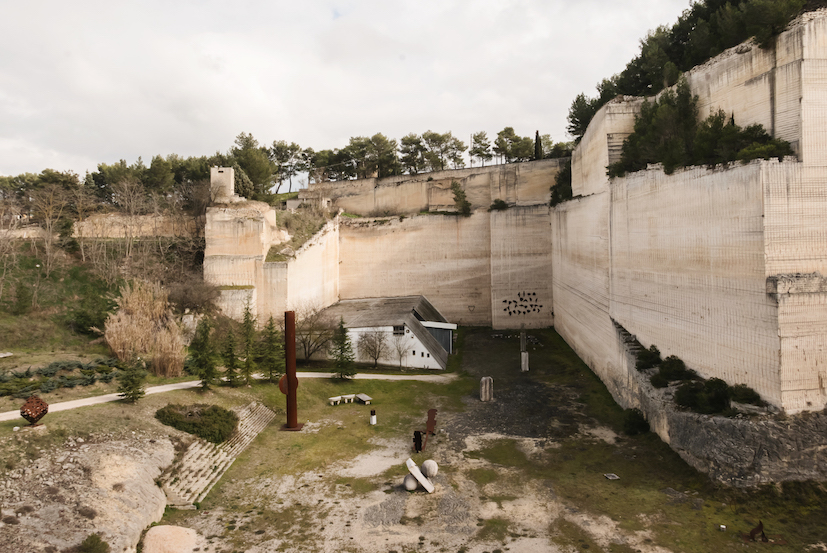
The location of the exhibition: Cava Paradiso, matera. Photo and copyright: Pierangelo Laterza.
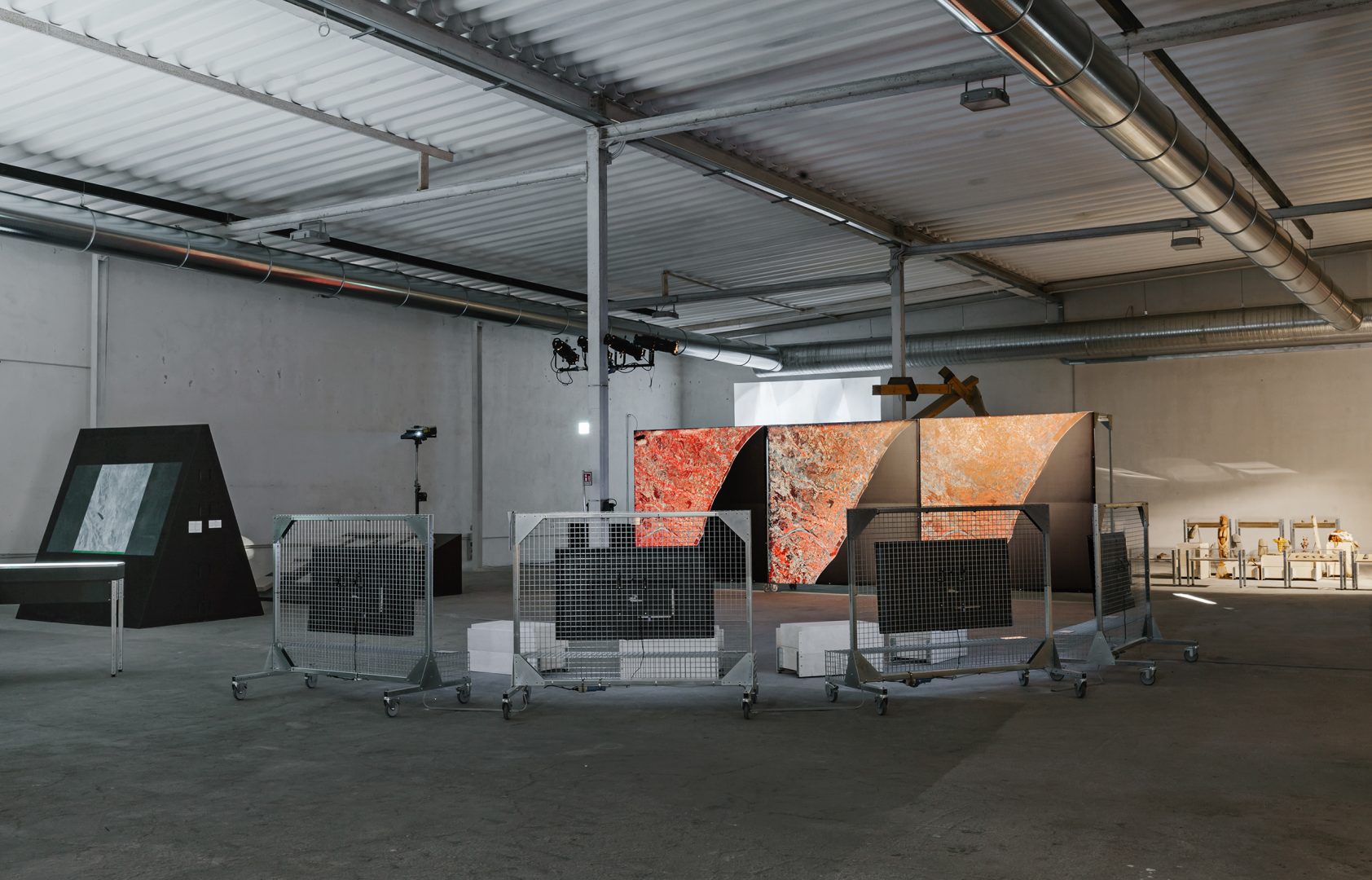
A part of the exhibition room of Visione Unica.
Studio Formafantasma
Studio Formafantasma is an Amsterdam based and successful design atelier of Andrea Trimarchi and Simone Farresin. Their interest in product design developed on the IM master course at Design Academy Eindhoven, where they graduated in July 2009. Since then, Formafantasma has developed a coherent body of work characterised by experimental material investigations and explored issues such as the relationship between tradition and local culture, critical approaches to sustainability and the significance of objects as cultural conduits.
In perceiving their role as a bridge between craft, industry, object and user, they are interested in forging links between their research-based practice and a wider design industry. As a result, works by Studio Formafantasma have been commissioned by a variety of partners including Fendi, Max Mara - Sportmax, Hermès, Droog, Nodus rug, J&L Lobmeyr, Gallery Giustini / Stagetti Roma, Gallery Libby Sellers, Established and Sons, Lexus, Krizia International and Flos. Whether designing for a client or investigating alternative applications of materials, Studio Formafantasma apply the same rigorous attention to context, process and detail to every project they undertake. The added nuance for the duo is that they do so with an eye to the historical, political and social forces that have shaped their environments.
Their work has been presented and published internationally and museums such as New York's MoMA, London’s Victoria and Albert, New York's Metropolitan Museum, the Chicago Art Institute, Paris's Centre Georges Pompidou, the TextielMuseum in Tilburg, the Stedelijk’s-Hertogenbosch, the Stedelijk Museum Amsterdam, MUDAC Lausanne, the Mint Museum of Craft and Design in North Carolina and the MAK Museum in Vienna have all acquired Formafantasma’s designs for their permanent collections. In March 2011 Paola Antonelli of the Museum of Modern Art in New York and esteemed design critic Alice Rawsthorn listed their studio amongst a handful of practices that would shape the future of design.
Andrea and Simone are lecturing and heading workshops in various Universities and Institutions. Currently they are teaching at the ‘Well Being’ and 'Contextual Design' Departments of the Design Academy Eindhoven. Since October 2016, they are at the head of the Design bachelor at MADE Program in Siracusa, Italy.
Exhibition address:
Address: I-DEA, Hangar Cava Paradiso
Contrada la Polomba SS7, 75100 Matera
Date: from June 8 to September 15,
More information:
www.ideamatera.eu
www.matera-basilicata2019.it